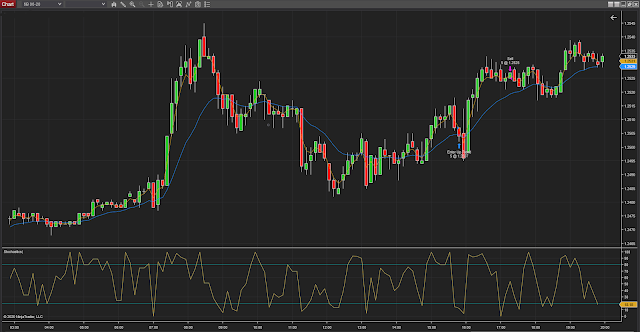Introduction
I consider that we should follow the central banks' steps. It´s very useful to adapt your strategies to the economic policy applied and the central bank recommendations. This applies more to investing in a medium to long-term that for day trading. However, it can be interesting to test a trading system with a variable that tracks if the central bank is bullish on the economy or if it has a negative outlook. Today, I will focus on the Eurodollar futures situation.
Outrights
According to the Fed’s positive outlook on the US economy and due to the accelerating growth and rapid job creation, it’s expected that we will see two more interest rate rises this year. With this scenario, the futures should be falling at least the next expiries (December 18 and March 19)
Eurodollar Dec18, Daily, Source: TradingView
The front-month contract has behaved as expected during the last year. However, the uncertainty about the trade war between US and China has stopped the bearish trend.
Eurodollar Dec19, Daily, Source: TradingView
This chart is similar to the previous one but this contract is more volatile.
Eurodollar Dec20, Daily, Source: TradingView
Again, the volatility is higher for this contract because it expires 1 year later than the previous one. It closed at 97.06 which implies a lower interest rate than the Dec 19 contract. we will see later how this affects to the interest rate curve.
Eurodollar Dec21, Daily, Source: TradingView
This contract is more interesting for trading purposes because the daily range his higher and it can offer more opportunities to go in and out.
Comparison
Comparison Eurodollar Dec18-Dec19-Dec20-Dec21, Daily, Source: TradingView
In this chart, we can see the differences between the 4 contracts showed before. Probably, one of the most interesting aspects of this chart is that the closest expiry shows a smoother price than the other price. This is related with the volatility. At the beginning of the year, the contracts were trading as expected with widen spreads however the trade wars speculation from the middle of May has made the contracts to converge and the spreads have narrowed.
Spreads
Eurodollar Spread Dec18-Dec19, Daily, Source: TradingView
We can see that that the spread Dec18-Dec19 widened in the first three months of the year and after that, it has been in the range 0.28-0.40. The main resistances for me are 0.38 and 0.40. The highlighted in yellow shows the reversal of the spreads due to the trade wars and the FOMC meeting that showed certain worries about the economy overhitting. The Fed officials didn’t give any indication about how willing they were to speed up the pace of interest rate increases. They weren´t worried about allowing the inflation to rise above 2% for a temporary period as far as the economy would expand. You can see this reversal in the previous charts as the eurodollar futures rallied on these days.
Eurodollar Spread Dec19-Dec20, Daily, Source: TradingView
In contrast to the last graph, we can see that the spread has narrowed and this means that the interest rate curve is flattening. The closing price of -0.02 implies that the 3-month interest rates will be lower in 2020 than in 2019.
Eurodollar Spread Dec20-Dec21, Daily, Source: TradingView
We can see the same pattern that the Dec19-Dec20 spread has. Again it implies that the 3-month interest rate will be lower in 2021 than in 2020. This can be temporary but in my opinion, it means that the US economy probably will slow down in the medium term. According to the spreads, it should happen in 2019-2020.
Sum up
We have seen some of the Eurodollar futures. We can see that the front months are moving in a different way than the back months. This implies narrow spreads and finally, an interest rate curve flattening. The ongoing uncertainty about the trade wars will continue. As far as the US economic growth continues and the labor data keeps as good as it is, the Fed will keep the interest rate increases expected. Hopefully, the Fed will act independently even if Donald Trump puts pressure to change its monetary policy. I don´t think that the international issues will affect to the US economy at least in the near term, however, we need to keep an eye on Argentina and Turkey. I hope you like it. Thanks.
Have a good trading!!
#trading #interestrates #Fed #inflation #US #macro #economicgrowth #eurodollar #GE #ED #spreads #opinion
Disclaimer
I wrote this article myself, and it expresses my own opinions that shouldn't be used as a trading advice. Trading carries considerable risk due to the high leverage involved















